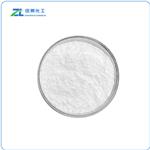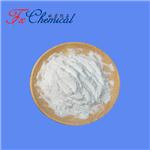§184.1324(a) Glyceryl monostearate, also known as monostearin,
is a mixture of variable proportions of glyceryl monostearate
(C21H42O4), and glyceryl esters of fatty acids present in commercial
stearic acid. Glyceryl monostearate is prepared by glycerolysis of
certain fats or oils that are derived from edible sources or by
esterification, with glycerin, of stearic acid that is derived from
edible sources.
Glyceryl monostearate is waxy to the touch and has a slight, mild fatty odor and taste The USP describes glyceryl monostearate as consisting of not less than 90% of monoglycerides, chiefy glyceryl monostearate and glyceryl monopalmitate.
While the names glyceryl monostearate and mono- and diglycerides
are used for a variety of esters of long-chain fatty acids,
the esters fall into two distinct grades:
40–55 percent monoglycerides The PhEur 6.0 describes glyceryl
monostearate 40–55 as a mixture of monoacylglycerols, mostly
monostearoylglycerol, together with quantities of di- and
triacylglycerols. It contains 40–55% of monoacylglycerols,
30–45% of diacylglycerols, and 5–15% of triacylglycerols.
This PhEur grade corresponds to mono- and di-glycerides USP–
NF, which has similar specifications (not less than 40%
monoglycerides).
90 percent monoglycerides The USP32–NF27 describes glyceryl
monostearate as consisting of not less than 90% of monoglycerides
of saturated fatty acids, chiefly glyceryl monostearate
(C21H42O4) and glyceryl monopalmitate (C19H38O4).
The commercial products are mixtures of variable proportions
of glyceryl monostearate and glyceryl monopalmitate.
Glyceryl monostearate is a white to cream-colored, wax-like
solid in the form of beads, flakes, or powder. It is waxy to the touch
and has a slight fatty odor and taste.
Commercially, glyceryl monostearate is synthesized from mono triglycerides, diglycerides, and triglycerides of palmitic acid and stearic acid. Glycerol monostearate is often used as an emulsifier to stabilize the product and prevent separation. It is found in many personal care products such as moisturizers, eye creams, sunscreens, cosmetics, and hand creams. Glycerol monostearate is also used as a preservative.
In pharmaceutical dispensing, see Green, J. Am. Pharm. Assoc. Pract. Pharm. Ed. 7, 299 (1946).
glyceryl monostearate (glycerin monostearate; glyceryl stearate) is widely used in cosmetics. It is an emulsifying and solubilizing ingredient, dispersing agent, emollient, formula stabilizer, and surface-action agent. employed in baby creams, face masks, foundation, and hand lotions, it is often derived from hydrogenated soybean oil. glyceryl monostearate has little or no G toxicity.
Glyceryl monostearate is also known as monostearin, is a mixture of variable proportions of glyceryl monostearate, glyceryl monopalmitate, and glyceryl esters of fatty acids present in commercial stearic acid. Is prepared by glycerolysis of certain fats or oils that are derived from edible sources or by esterification, with glycerin, of stearic acid that is derived from edible sources.
glyceryl stearate is an emulsifier that helps form neutral, stable emulsions. It is also a solvent, humectant, and consistency regulator in water-in-oil and oil-in-water formulations. In addition, it can be used as a skin lubricant and imparts a pleasant skin feel. glyceryl stearate is a mixture of mono-, di-, and triglycerides of palmitic and stearic acids, and is made from glycerin and stearic fatty acids. Derived for cosmetic use from palm kernel or soy oil, it is also found in the human body. It is very mild with a low skin-irritation profile; however, a slight risk of irritation exists if products contain poor quality glyceryl stearate.
Aldo(R) MSD KFG is a self emulsifying nonionic surfactant, used as a lubricant in confectionery, as a release agent and as a dough softener. It is used as a low HLB emulsifier in personal care products where non animal grade products are needed.
Lonzest(R) GMS is a surfactant used in a variety of markets.
Aldo(R) MS BO KFG is a glycerol ester made from soybean oil derived fatty acid. This product finds uses in both food and cosmetic applications.
An intermediate chemical.
Glyceryl monostearate is prepared by the reaction of glycerin with
triglycerides from animal or vegetable sources, producing a mixture
of monoglycerides and diglycerides. The diglycerides may be further
reacted to produce the 90% monoglyceride grade. Another process
involves reaction of glycerol with stearoyl chloride.
The starting materials are not pure substances and therefore the
products obtained from the processes contain a mixture of esters,
including palmitate and oleate. Consequently, the composition, and
therefore the physical properties, of glyceryl monostearate may vary
considerably depending on the manufacturer.
Pharmaceutical Applications
The many varieties of glyceryl monostearate are used as nonionic
emulsifiers, stabilizers, emollients, and plasticizers in a variety of
food, pharmaceutical, and cosmetic applications. It acts as an
effective stabilizer, that is, as a mutual solvent for polar and
nonpolar compounds that may form water-in-oil or oil-in-water
emulsions.These properties also make it useful as a dispersing
agent for pigments in oils or solids in fats, or as a solvent for
phospholipids, such as lecithin.
Glyceryl monostearate has also been used in a novel fluidized
hot-melt granulation technique for the production of granules and
tablets.
Glyceryl monostearate is a lubricant for tablet manufacturing
and may be used to form sustained-release matrices for solid dosage
forms. Sustained-release applications include the formulation of
pellets for tablets or suppositories, and the preparation of a
veterinary bolus. Glyceryl monostearate has also been used as a
matrix ingredient for a biodegradable, implantable, controlledrelease
dosage form.
When using glyceryl monostearate in a formulation, the
possibility of polymorph formation should be considered. The aform
is dispersible and foamy, useful as an emulsifying agent or
preservative. The denser, more stable, b-form is suitable for wax
matrices. This application has been used to mask the flavor of
clarithromycin in a pediatric formulation.
Poison by
intraperitoneal route. When heated to
decomposition it emits acrid smoke and
irritating fumes. See also ESTERS.
Glyceryl monostearate is widely used in cosmetics, foods, and oral
and topical pharmaceutical formulations, and is generally regarded
as a nontoxic and nonirritant material.
LD50 (mouse, IP): 0.2 g/kg
If stored at warm temperatures, glyceryl monostearate increases in
acid value upon aging owing to the saponification of the ester with
trace amounts of water. Effective antioxidants may be added, such
as butylated hydroxytoluene and propyl gallate.
Glyceryl monostearate should be stored in a tightly closed
container in a cool, dry place, and protected from light.
The self-emulsifying grades of glyceryl monostearate are incompatible
with acidic substances.
GRAS listed. Included in the FDA Inactive Ingredients Database
(oral capsules and tablets; ophthalmic, otic, rectal, topical,
transdermal, and vaginal preparations). Included in nonparenteral
medicines licensed in the UK. Included in the Canadian List of
Acceptable Non-medicinal Ingredients.
If glyceryl monostearate is produced from animal fats (tallow),
there may be additional regulatory requirements that the source be
free of contamination from bovine spongiform encephalopathy.



